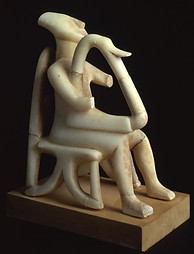
Naxos, Greece
The best manner to present Naxos is to travel briefly through its history. Naxos, with its 440 km² of land (1.4x the size of Malta), is the largest island of the Cyclades complex.
The island, renowned for its rich history and beautiful architecture, enjoyed its most prosperous periods in the early Bronze Age, again in the Archaic and Classical periods, and actually now.

According to mythology, Zeus, born in Crete, was raised in Naxos, as well as his son Dionysus, the god of wine. Dionysus loved so much Naxos that he made it a fertile land, full of vineyards, producing a wine of excellent taste. Naxos is also the place where Theseus, after killing the Minotaur of Crete, took Ariadne, the daughter of the Cretan King Minos, who helped him find his way in the Labyrinth were the Minotaur was kept, and stopped in Naxos on his way back to Athens. There, he left Ariadne with whom Dionysus fell madly in love and then married. Apollo was also associated with the island and its shepherds and florists. Ares, the god of war, war, sought shelter in the bowels of the island, the place of iron-eating rock (meaning emery, the island’s famous export material used to fine-polish the marble so often used in Greek sculpture). Emery mines are still in use today, up in the Mount Koronion and had brought wealth to the six villages that had rights to mining the dark hard rock, especially during the late 1900s-early 2000s.

Naxos was the most important center of civilization of all the Cyclades during the ancient period, 4000-1000 BC. The island was first inhabited in the Neolithic period with significant signs of occupation in the 4th millennium. From the 3rd millennium on the Cyclades displayed a distinct culture of their own - epitomized by the distinct Cycladic sculptures of minimalist standing figures carved from marble (figures on the left and right). From the middle Bronze Age, Naxos and the Cyclades were influenced by the Minoan civilization and the later mainland Mycenaean civilization - evidenced in both architecture and art. The most important settlement at this time was Grotta, by Hora. Several items are hosted at the Archaeological Museum of Naxos, next to the Venue.
Settlers from Ionia occupied the island from c.1025 BCE and contributed in the development and growth of Naxos, with the sea trading which brought wealth. In the 8th century BCE the island, through export of its local marble and emery, was prosperous enough to found colonies, like the city of Naxos in Sicily. Another example of Naxos’s wealth is the various monumental dedications that were made at the great sanctuary sites such as Delos (the famous marble lions) and Delphi (the celebrated Sphinx). However, it was in the late 6th century BCE that Naxos enjoyed its political and cultural zenith when the tyrant Lygdamis took control of the island and, through an impressive rebuilding program to improve infrastructures (e.g., aqueducts) and temples, as well as install a kind of a senate of representatives, Naxos became the dominant force in the Cyclades.


In the 5th century BCE the island became the center of a revolution against Ionia when Naxian sailors backed the invading Persians, but the Persians eventually sacked the island. Consequently, in the battles of Salamis (480 BCE) the Naxians, with their fleet of triremes, understandably sided with the Athenians against the Persians and became a member of the Delian League. Naxos was taken by the Romans in 41 BCE and during the Byzantine period, in the 5th and 6th centuries CE, many of the pagan temples, including that of Apollo, were converted into Christian churches, and such incorporation of structural elements can be still readily seen (e.g., Church of Drosiani).
The Venetians marked an important period in the history of Naxos. In 1207, Marco Sanudo took the Cyclades and established a duchy, called the Duchy of the Aegean, where Naxos was the headquarters and the new ruler was installed creating the beginning of a long line of Dukes in Naxos. The first reaction of the inhabitants of Naxos was negative against the Venetian ruler but they were obliged to admit their defeat. During those years, Marco Sanudo divided the island into 56 provinces, distributed among the various Venetian nobles, and built the beautiful and powerful castle on top of Naxos Town. The Jesuit Commercial School was also founded inside the castle. The power of Marco Sanudo last until 1564, when the Ottomans took the entire Greece. During the Turkish Ottoman rule, the Venetian negotiated to keep their authority and administration of the island, collecting taxes for the Ottomans. The island of Naxos became part of the liberated New Greek State in 1831.

Today, the island’s dynamic agriculture, dairy, marble, and tourism industries assures that there is business ethos and infrastructure to accommodate scientific conferences as well.